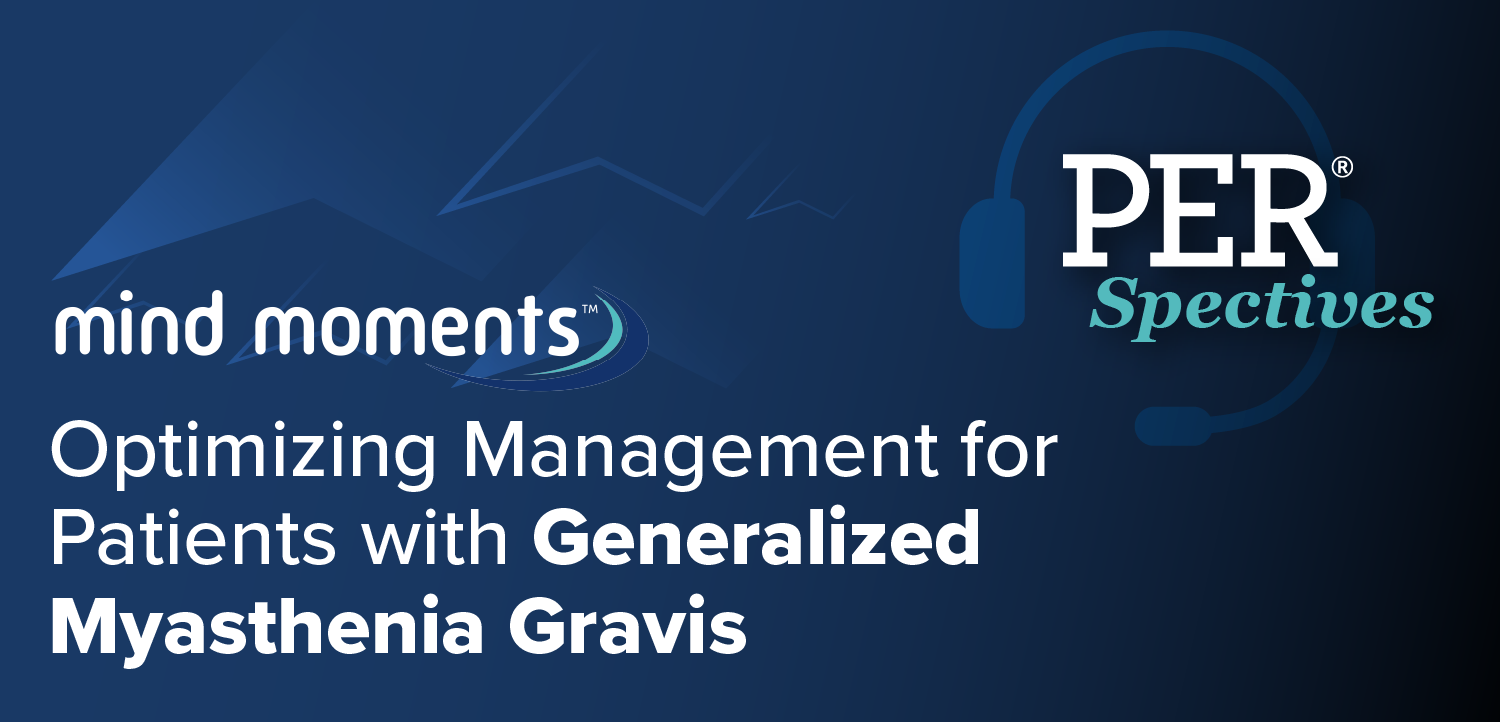
NeuroVoices: Howard Fillit, MD, on AAIC 2025 Highlights in Alzheimer Disease Prevention, Biomarkers, and Therapeutics
The cofounder and chief science officer of the Alzheimer's Drug Discovery Foundation recapped some of the notable recent developments in the Alzheimer disease field presented at the 2025 Alzheimer’s Association International Conference.
The recently concluded
Lifestyle interventions such as exercise, diet, cognitive stimulation, and cardiovascular health, may continue to play an evolving role in Alzheimer prevention, as shown by new data presented at AAIC 2025 from the
This year’s conference also featured real-world data on FDA-approved antiamyloid therapies, including
NeurologyLive: What are your thoughts and insights on the new clinical practice guidelines for blood-based biomarkers?
Howard Fillit, MD: The main point was really to move a lot of this use of the blood-brain biomarkers into specialty neurology care in symptomatic patients for diagnostic purposes and confirming the etiologic diagnosis of a person who has cognitive impairment, whether it's mild cognitive impairment (MCI) or mild dementia. And that's important to determine their eligibility for treatment. I also personally think that beyond specialty neurology care, these tests will be used by primary care doctors to determine whether patients should be triaged to specialty care to confirm a diagnosis. Those were the 2 main things I think came out of it.
The practice guidelines are very good, but as the usage of these tests becomes familiar to more generalists, general neurologists, and primary care doctors, they'll be utilized particularly in patients who want to know what they have and are considering treatment. The first step would be to see if they have a positive p-tau 217 result, which predicts amyloid in the brain on a blood-based biomarker basis, rather than having to go to a PET scan, which specialty neurologists could order just to confirm the diagnosis if they want to.
Another highlight from AAIC 2025 was the U.S. POINTER study. What were your takeaways from it?
We've been involved with the FINGER study, which was the grand initial study—a randomized trial of prevention intervention—which showed that with the 5 main elements of the FINGER intervention, which are exercise, diet, managing cardiovascular risk factors like diabetes and hypertension and atherosclerosis through hyperlipidemia, cognitive stimulation, and social engagement, you could slow down the rate of cognitive decline among older patients and even in patients who have MCI.
Of course, the grand mark of truth in science is replication. It was really amazing to see the U.S. POINTER study, in a new population of US citizens rather than primarily Scandinavian citizens, replicating the results in almost an identical fashion, except for the study design, which was the self-guided group vs the high-intensity implementation group. As expected, the implementation group did a lot better because implementation science is really quite difficult, and having a structured intervention was part of the success of the FINGER study. That has now been borne out with the U.S. POINTER study. We have 2 very large studies that show that prevention works, which is really exciting.
The next phase of this prevention work will be combination therapy, which we're already at ADDF funding with the FINGER study, adding a drug, like we do in heart disease, where we have lifestyle intervention and use statins to manage cholesterol. We have a combination of medications and lifestyle intervention, and that's what's happening now in AD. We're moving to this FINGER-generated type of approach with lifestyle and disease management, adding drugs that will also slow the progression of the disease itself, such as metformin, hopefully, but I’m sure there will be many others that will be tested.
What are your thoughts on the new data presented on recently approved AD drugs such as lecanemab and donanemab?
It's the natural lifespan of a drug. In the AD field, we've never had disease-modifying drugs. The first thing we had to do was prove the drugs work. That was the first step: Do they slow the rate of decline if you remove amyloid from the brain? I think the FDA advisory committees were unanimous that these drugs worked, 11 to 0. The second question to the committees was, do these drugs have a favorable benefit-risk ratio? In other words, are they safe enough to be used by patients? Again, it was a unanimous 11 to 0 decision that they had a favorable benefit-risk ratio.
When you introduce an entirely new class of agents that require infusions to a population of physicians and patients who are not used to older patients going in for infusions to treat cognitive impairment as the clinical outcome—and to remove the biomarker, the amyloid plaques in the brain, which you can measure by brain scans and, hopefully one day, by p-tau 217 in the blood—this is amazing. It's incredible that there are drugs on the market approved by the FDA that can treat the disease as disease-modifying agents. I've been doing this for 45 years; I never thought we'd come to this, and we’re there.
What's the next phase of the life cycle of a drug? It's how to do it better, how to make the drugs themselves even better. That's what we saw today. We went from hearing about infusions, which are somewhat invasive, costly, and require a visit to an infusion center, to the subcutaneous, self-administered at-home version of these drugs, which we heard really works. That’s going to be the next iteration and evolution of the use of these drugs.
The next question is maintenance therapy. If we continue to maintain patients on these drugs, do they continue to get benefit? Or is it more along the lines of getting rid of the amyloid, with patients going into remission and then following them to see if they start to accumulate amyloid again? How long does it take until the amyloid is reaccumulated, so they need to go back into treatment again? That's the real next phase of usage of these drugs. Do patients have to maintain once-a-month infusions for the remainder of their lifetime, or can they go off for 2 to 4 years and then go back in for continued treatment?
The other thing was getting a dose regimen that was safe. I think that's the third evolution in the use of these drugs, because the FDA approved not only maintenance therapy but also altered dose-ranging use for these drugs—giving patients a lower dose initially and then titrating up, which is done with many drugs—and showing that if you do that, patients have a lower rate of serious adverse events, particularly ARIA [amyloid-related imaging abnormality] adverse effects.
The last thing I was quite interested in and amazed by is that about 20% of patients in the long-term follow-up got better. It’s always been about slowing the rate of decline, which is a hard clinical outcome to convince patients to keep taking medications for, especially through infusions. But to see 20% to 30%, up to 50% of patients in certain studies, getting better is quite an amazing outcome. And it will be a clinically meaningful outcome—that’s the most important thing. Patients will want to take the drugs because they have a chance of getting better.
I also think that a large percentage of patients in the trials stabilized for 12 to 18 months, which is a very good outcome for a disease that is progressive and uniformly downhill. Now we’ve had large percentages of patients in these trials who are stable for a window of time. They don’t progress from MCI to mild dementia, which is a big deal. Giving someone an extra year at the MCI stage, where they still remember the names of their grandchildren—that could be a big deal for patients.
And trontinemab is the other evolution making it more effective for these antibodies to get into the brain, because the brain shuttle really seems to work. That’s pretty interesting: It makes the dose you need less, and it might be associated with fewer adverse effects and better efficacy.
Was there anything else you wanted to add as a closing remark about your experience at AAIC this year?
I’ve been going to this conference for probably more than 25 years, and I’ve been in the field for about 45 years. I’ve literally never been more excited. We have progress on all the major pillars—as I mentioned earlier, the prevention pillar, major breakthroughs; the blood biomarker pillars, major breakthroughs; commercialization, with the FDA approving the first blood test for the detection of amyloid in the brain. It just boggles the mind. And then treatments that are approved and getting better and better, with many more in the pipeline. It was a very optimistic conference, and we’re in a very optimistic phase of the field with a bright future.
Transcript edited for clarity.
REFERENCES
1. Alzheimer’s Association releases its first clinical practice guideline for blood-based biomarker tests. News release. Alzheimer’s Association. July 29, 2025. Accessed August 12, 2025. https://aaic.alz.org/releases-2025/clinical-practice-guideline-blood-based-biomarkers.asp
2. Palmqvist S, Whitson HE, Allen LA, et al. Alzheimer's Association Clinical Practice Guideline on the use of blood-based biomarkers in the diagnostic workup of suspected Alzheimer's disease within specialized care settings. Alzheimers Dement. 2025;21(7):e70535. doi:10.1002/alz.70535
3. U.S. Pointer study shows structured lifestyle program targeting multiple risk factors improves cognition in older adults at risk of cognitive decline. News release. Alzheimer’s Association. July 28, 2025. Accessed August 12, 2025. https://aaic.alz.org/releases-2025/us-pointer-study-results-announced.asp
4. Baker LD, Snyder HM, Espeland MA, et al. Study design and methods: U.S. study to protect brain health through lifestyle intervention to reduce risk (U.S. POINTER). Alzheimers Dement. 2024;20(2):769-782. doi:10.1002/alz.13365
5. Ngandu T, Lehtisalo J, Solomon A, et al. A 2 year multidomain intervention of diet, exercise, cognitive training, and vascular risk monitoring versus control to prevent cognitive decline in at-risk elderly people (FINGER): a randomised controlled trial. Lancet. 2015;385(9984):2255-2263. doi:10.1016/S0140-6736(15)60461-5
Newsletter
Keep your finger on the pulse of neurology—subscribe to NeurologyLive for expert interviews, new data, and breakthrough treatment updates.




































